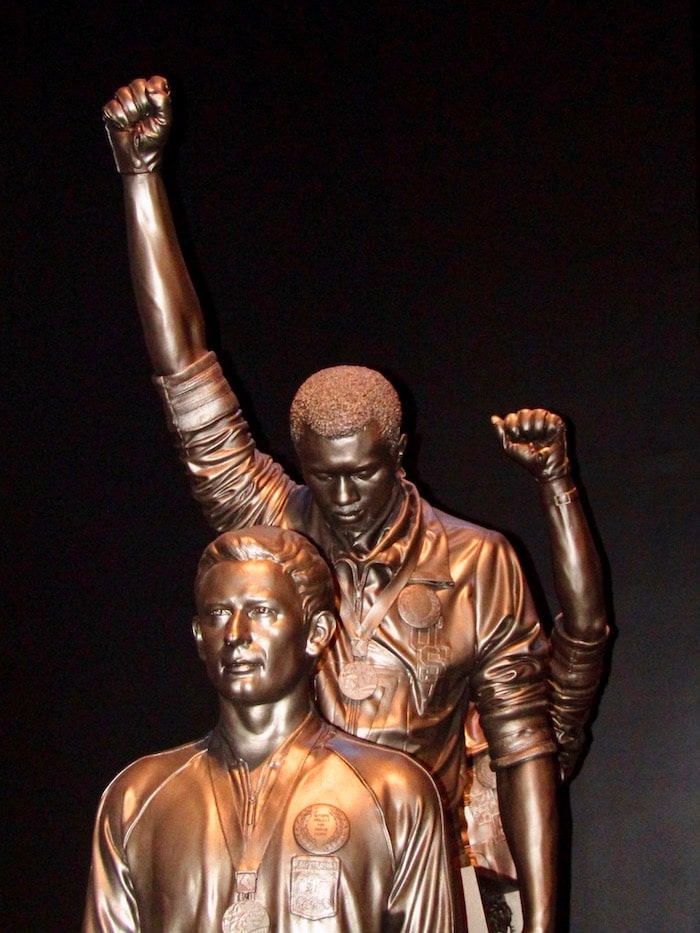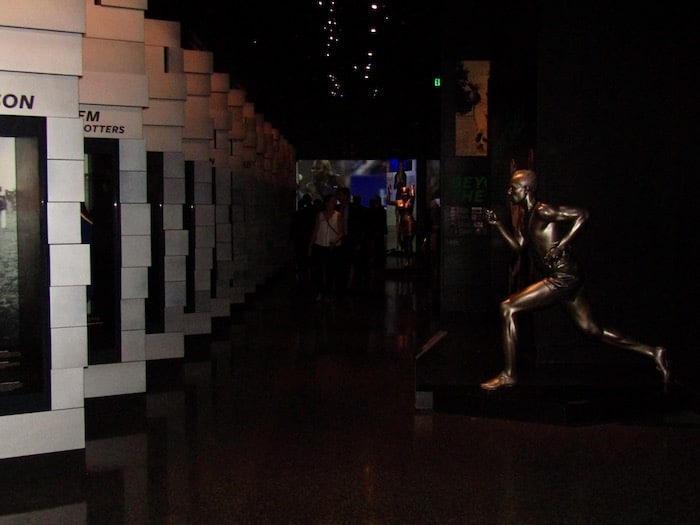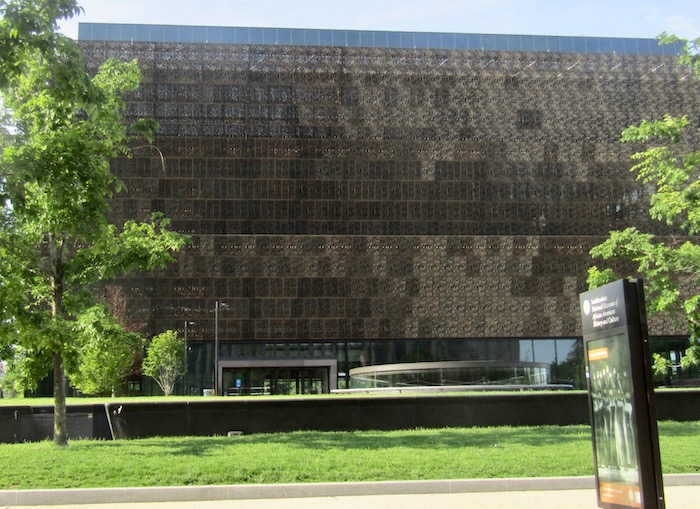I went to the National Museum of African American History and Culture (NMAAHC) for my sister’s graduation ceremony in May 2018. We were lucky, because this museum is extremely popular and visiting it is somewhat complicated. This museum opened in September 2016, being part of the collection of museums managed by Smithsonian in Washington D.C. However, it took 100 years since the idea originated, until it was finally built and opened to the public.
Museum History
Efforts to establish a federal museum that featured African-American culture and history began in 1915. Veterans of the Union Army were frustrated with racial discrimination. Definitely visit the Ford’s Theatre where Abraham Lincoln was murdered, if you want to learn what the United States was like at that time. In 1929, President Herbert Hoover paid attention to their request. He created a committee to build a national building that would show the achievements of African Americans in the arts and sciences. But the congress showed no interest and nothing came out of the project.

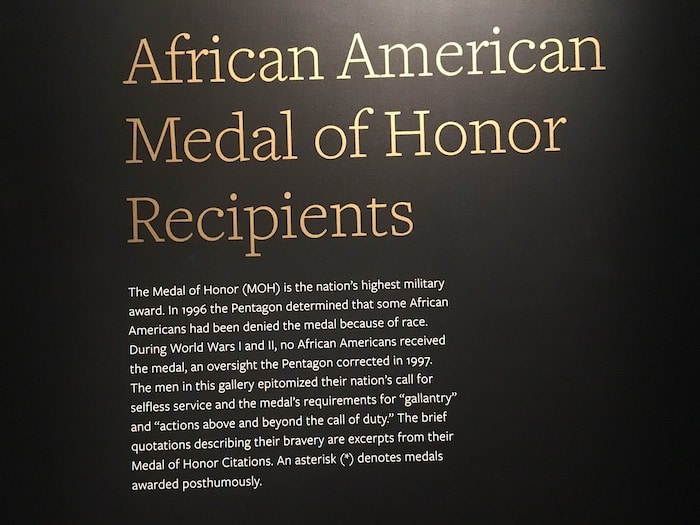
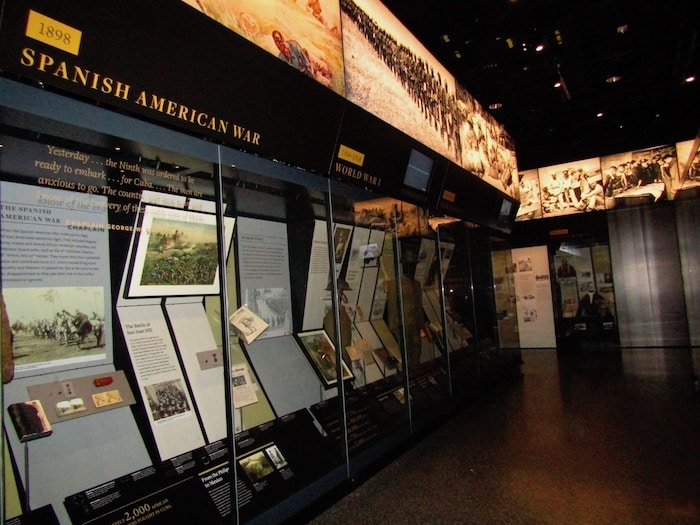
The subject was retaken with the congress in the 1980s and during that decade and the next one, they tried to pass the law without getting support. Groups that supported the museum began coordinating efforts with Smithsonian. In 1981, Congress approved funds to build a National African American Museum in Wilberforce, Ohio. During the late 1990s other cities began to build their museums, but nothing at the federal level in Washington D.C.
In 2001, Smithsonian asked Congress to establish a study commission with federal funds to support a National Museum of African American History and Culture. Congress agreed and president George W. Bush signed a legislation that established a commission to study the need for a museum. Its purpose was to establish how to raise funds to build and support, in addition of choosing the location, which according to the president should be in the National Mall. They presented their results two years later, in April 2003.


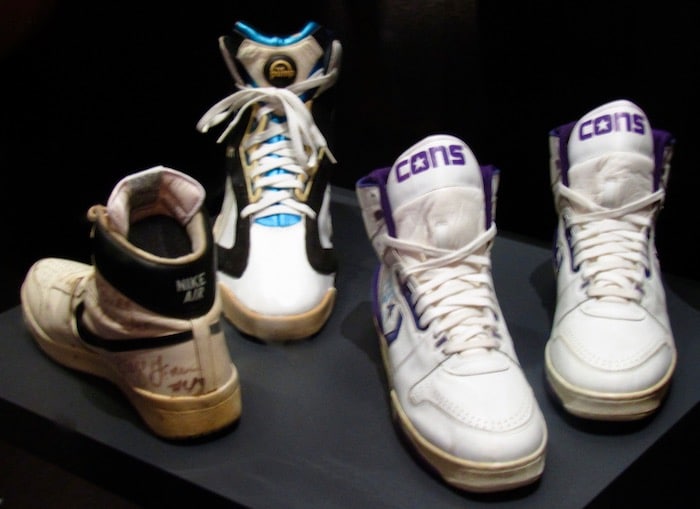
Museum Design
The commission proposed a museum of 350,000 square feet (32,516 square meters) with construction costs of $360 million. Half of the funds would come from private money and the other half from the federal government. President George W. Bush signed the legislation in December 2003. It included $17 million for museum planning and a site selection process, plus $15 million for educational programs. Finally, in January 2006, the committee recommended a site west of the National Museum of American History, on 15th Street with Constitution Avenue. The area is part of the Washington Monument which is the best place to see the cherry blossoms in Washington D.C.
A plot of 5 acres (2 hectares) was delivered to build a building that could cost up to $500 million. A competition was made for the design that had to have the “LEED Gold” sustainability certification. The design should project optimism and at the same time show the dark past of African Americans.
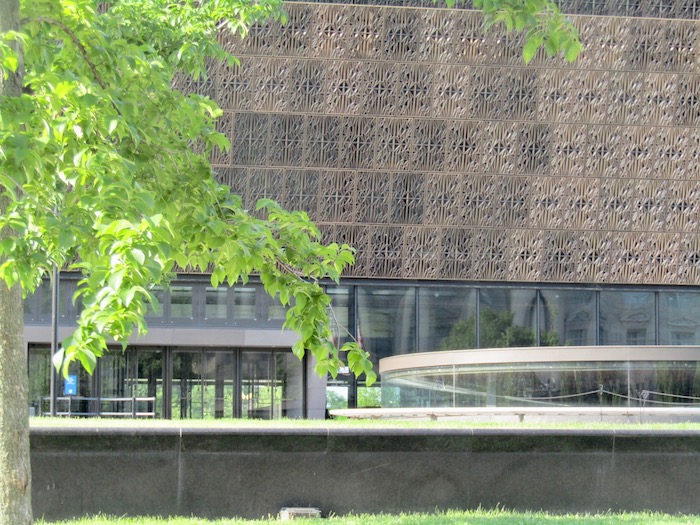
Construction and Opening
The Freelon Group / Adjaye Associates / Davis Brody Bond group won the competition with an inverted pyramid design of bronze architecture that looked like a crown used in the Yoruba culture. However, changes were made at the time of approval. Companies like AFLAC and General Motors donated funds, as did Oprah. In total they raised $162 million and Smithsonian put the rest to complete the $250 million.

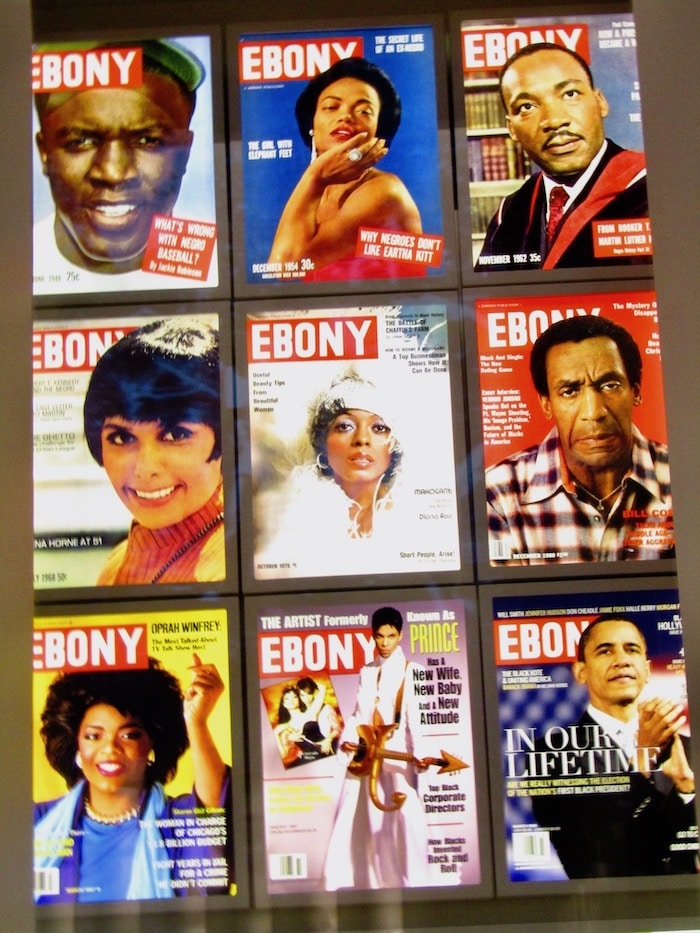
The construction initiation ceremony of the National Museum of African American History and Culture took place on February 22, 2012. President Barack Obama attended, as well as the inauguration on September 24, 2016. On that occasion they rang a bell of the first Baptist church for African Americans that was founded illegally (blacks could not congregate or preach) in 1776 in Williamsburg, Virginia. Obama cried during the speech, saying he would like to visit with his future grandchildren.
David Rubenstein, CEO of The Carlyle Group, donated $10 million and provided commemorative copies of the Thirteenth Amendment and the Emancipation Proclamation, which were signed by Abraham Lincoln. Other companies such as Microsoft, Google, Wells Fargo and Vista Equity Partners donated the rest of the funds. The building is beautiful, although it is completely different from all the others found in the National Mall. It won the Beazley Design of the Year award for 2017 in the architecture category.
Tickets for the National Museum of African American History and Culture
When I went it was impossible to enter without a ticket, since so many people wanted to go. More than 600,000 people visited the museum during the first three months. At the beginning they had pre-purchase tickets with entry times and each morning a number of tickets were delivered for same day entrance. That didn’t work, so they had to reduce the number of tickets and put them in the early afternoon. In mid-December 2016 the tickets were already committed until March 2017.
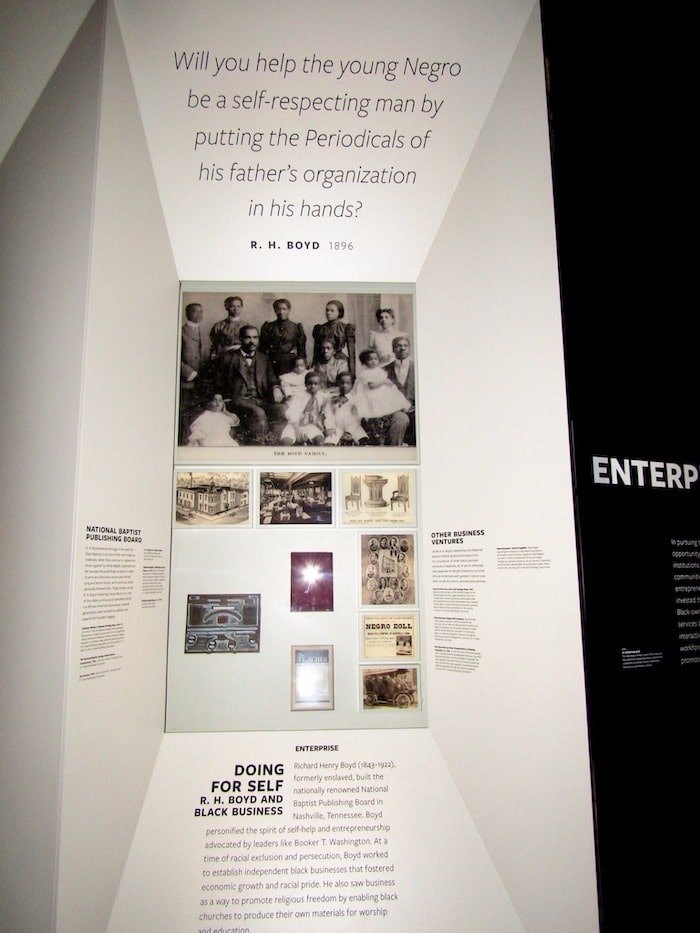
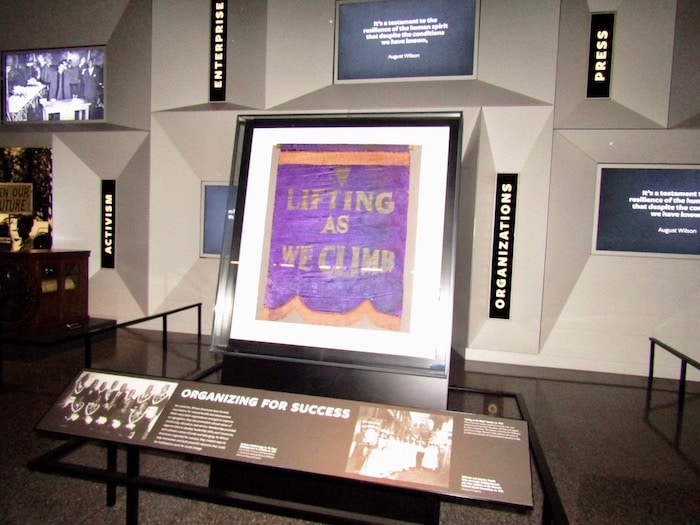

1.2 million people visited in the first six months and 3 million in the first year, making it the fourth most visited museum of Smithsonian. Therefore, it became one of the tourist sites that had to be visited in Washington D.C. On an average day, 8,000 people went spending an average of 6 hours.
In January, 2019, they changed the entry policy. From September to February (low season) you can go on weekdays without an entry pass. Weekend passes (Saturday and Sunday) are posted online at 6:30 a.m. You can’t go without a pass. On the first Wednesday of each month they put passes for the next three months. If you visit in high season (March to August) you can only go without a pass after 1 p.m. from Monday to Friday. There is no cost to visit the National Museum of African American History and Culture. Its daily schedule is from 10 a.m. to 5:30 p.m.
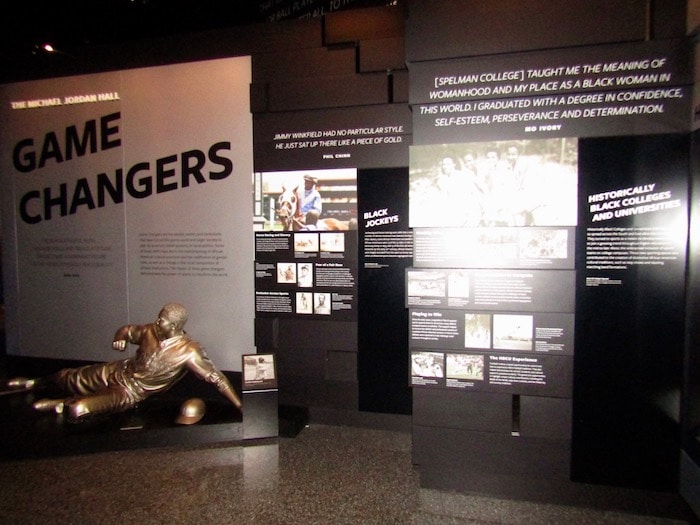
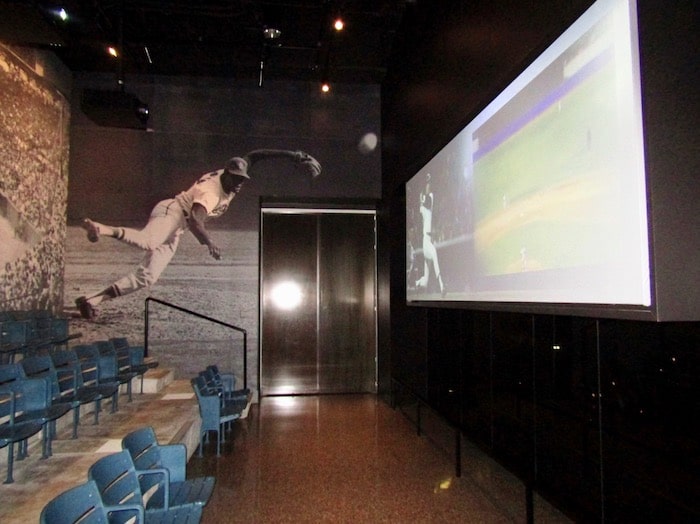
Visits
We had three hours to see the museum privately (there were still plenty of people) but it was not enough. The National Museum of African American History and Culture has more than 40,000 objects in its collection, but only exhibits 3,500. In total, the building has 10 floors, five underground and five above.
If you get hungry while trying to see everything, you can eat at Sweet Home Cafe. As you can imagine, the restaurant focuses on dishes, desserts and drinks influenced by African Americans. They have four stations including: southern agricultural, Creole coast, northern states, and the western mountain range. Mitsitam Café in the National Museum of the American Indian was used as an example. Through food, culture is taught and heritage is maintained. Therefore, they spent two years searching for recipes and interviewing chefs throughout the United States, then designing the concept and the menu.
Exhibits
Musical Crossroads
I think the musical exhibition was my favorite in the entire National Museum of African American History and Culture. There is no way to deny the influence that African Americans have had on the world’s musical history. They used music (and art) as a way to have a voice and express themselves. Thus they fought for freedom, justice, and social changes. It started with Marian Anderson who gave a free concert at the Lincoln Memorial (after they didn’t let her sing at Constitution Hall) for Easter in 1939.
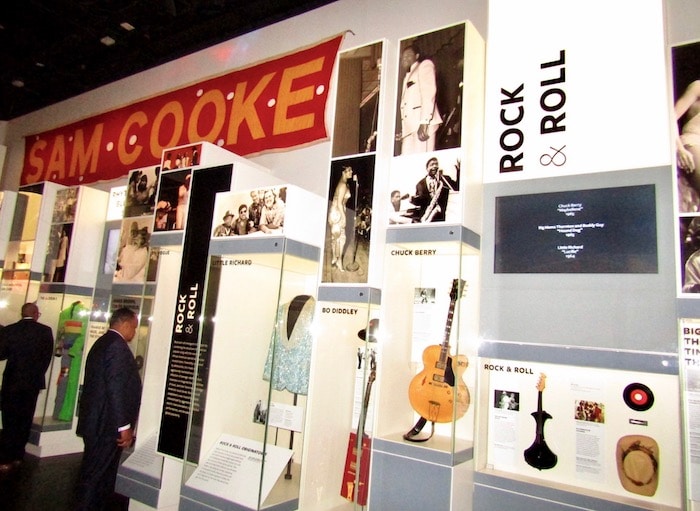

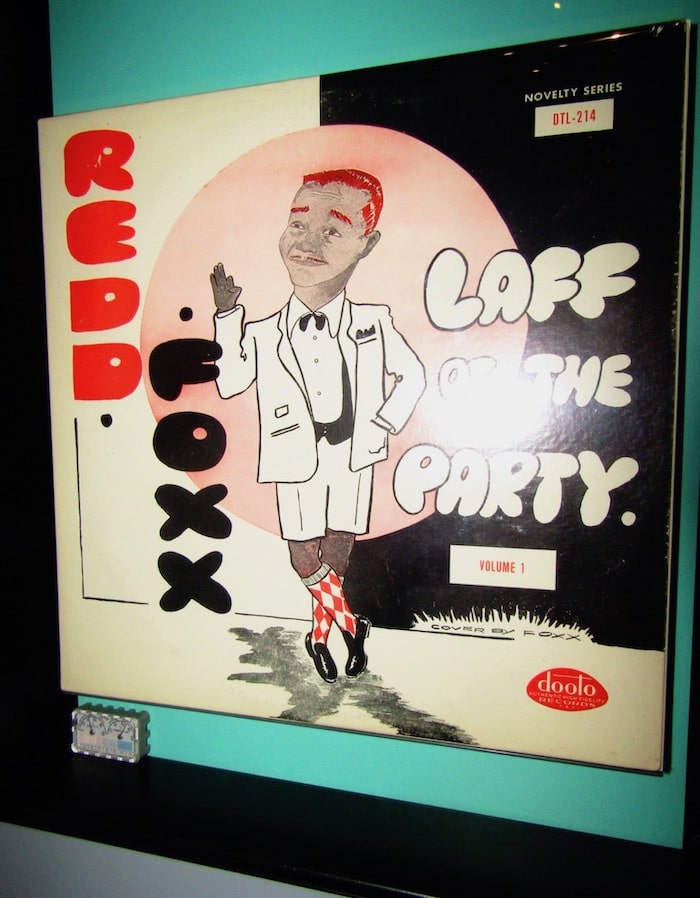
Minton’s Playhouse neon sign is also displayed. This site opened in Harlem in 1938 and was the birthplace of bebop, creating a new style of jazz. Classic rock n roll lovers will be delighted to see Chuck Berry’s red Cadillac. There is also a suit from my namesake, Ursula Hilaria Celia de la Caridad Cruz Alfonso, better known as Celia Cruz.
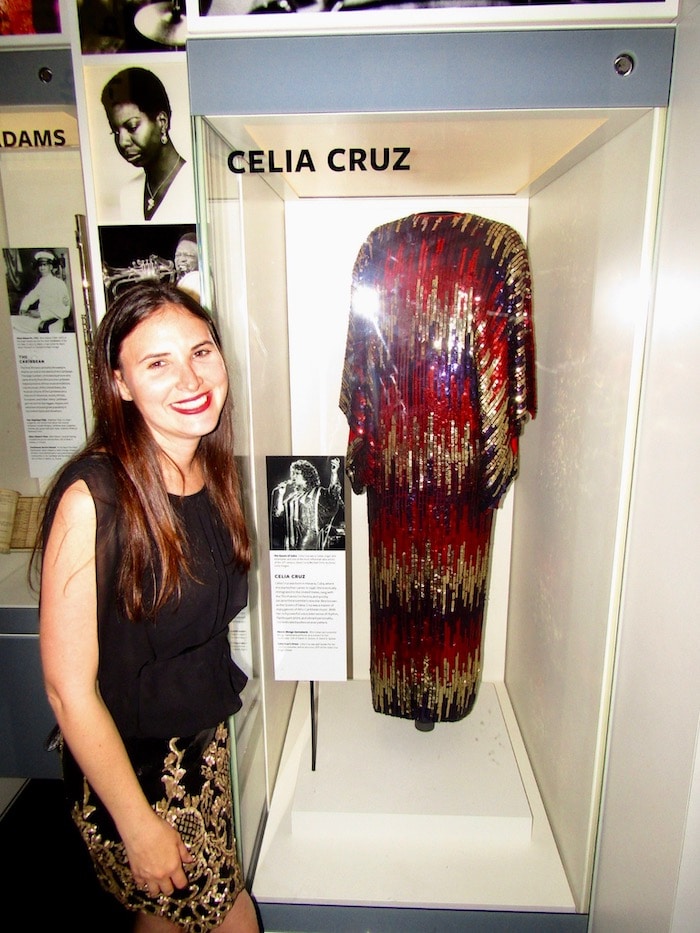
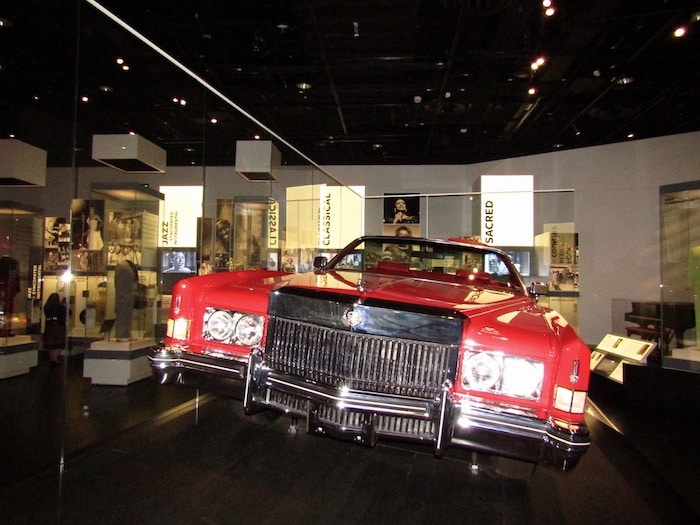
Cultural Expressions
This exhibition tells how African-American and African culture transformed popular culture. It is divided into five categories. Style includes image and identity, showing clothes, hairstyles and jewelry. According to the exhibition “God created black people and black people created style.” The gastronomy section highlights chefs and restaurant owners. Another section of artists shows crafts, while movement shows dances and forms of communication with gestures. The last section is language, which includes oral traditions and expressions, as well as literature and poetry.
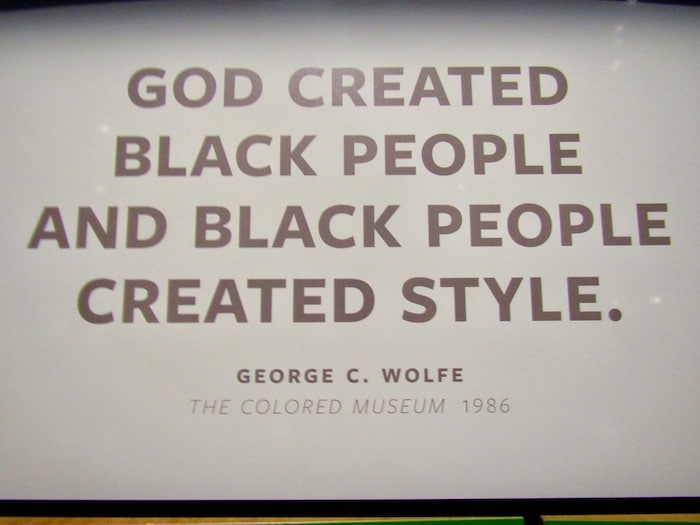

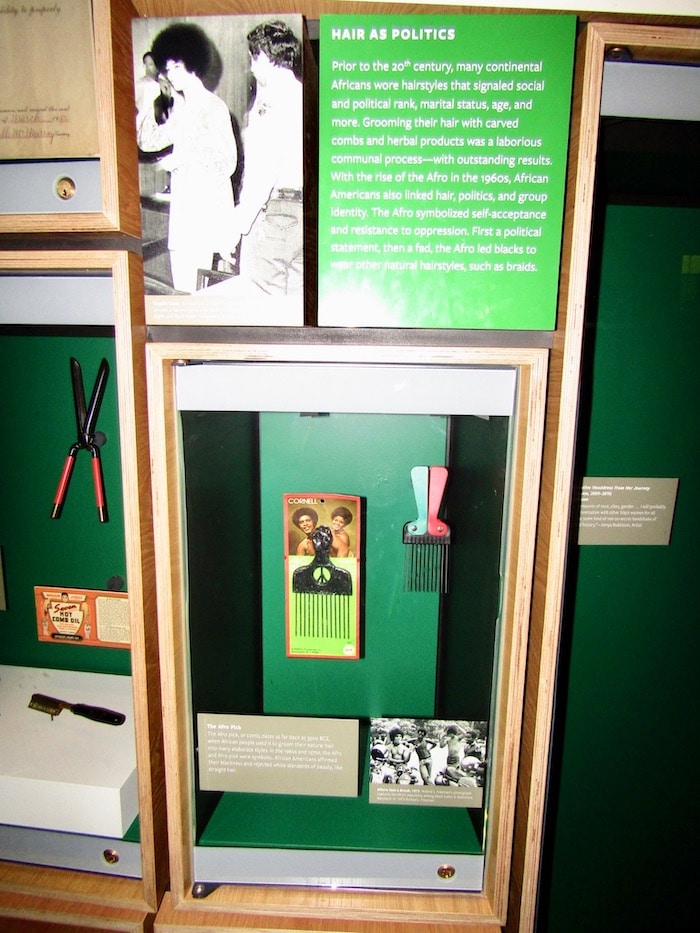
Taking the Stage
The story of how African Americans managed to enter the theater, movies and television is told in the exhibition “Taking the Stage.” They had to act in roles that were sometimes discriminatory, because of stereotypes. Over the years, roles have been changing. African-American actors who started in small roles are now big stars, as are dancers and comedians. Between 1910 and 1940 the cinemas were segregated. Therefore, an independent African-American film industry emerged to break stereotypes. In the 1950s and 1960s, African-American comedians entered television programs.

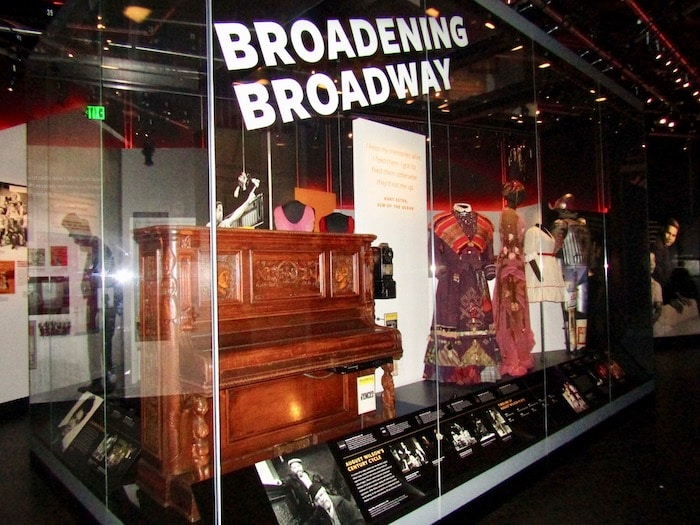
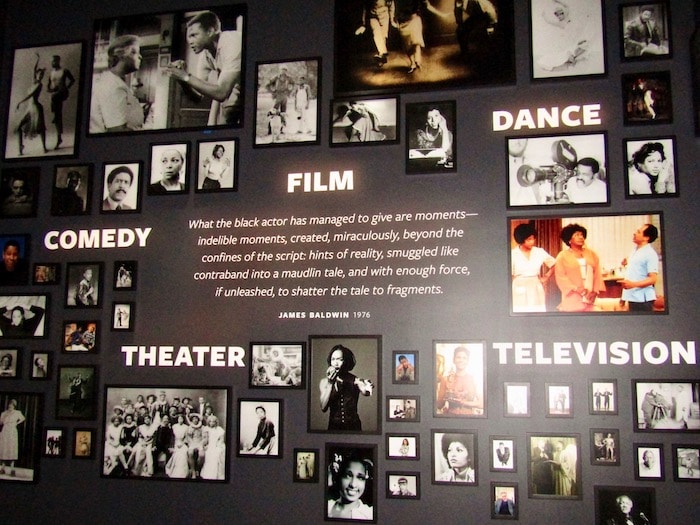
This exhibition was criticized for having objects from the career of actor Bill Cosby, who was accused of sexual assault. In response, the museum put “in recent years, revelations about alleged inappropriate sexual behavior have overshadowed Cosby’s entertainment career and severely damaged his reputation.”

Sports
African Americans have excelled in sports and this exhibition is a tribute to them. Undoubtedly, many athletes have made contributions in and out of the game. Sports were more tolerant in letting African Americans participate, achieving a unique role in American culture. However, they had to fight for better spaces, without segregation. American football originally started in elite universities. In 1892, Livingston College and Biddle University played in the first game between historically black colleges and universities.
Blacks couldn’t play in the Major League Baseball. Therefore, they invented the League of Blacks during the first half of the 20th century. Jackie Robinson was the first African-American to play in the Major Leagues. As a consequence, was a great activist against racial injustices. His number was 42 and the last player allowed to use the number was Mariano Rivera, the Panamanian who was a pitcher for the Yankees.
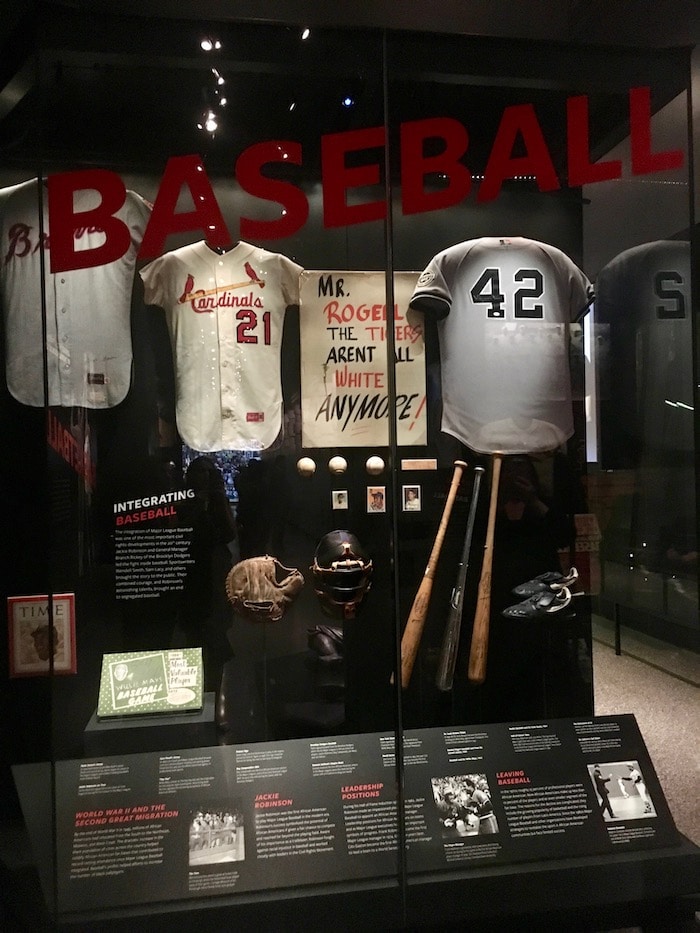
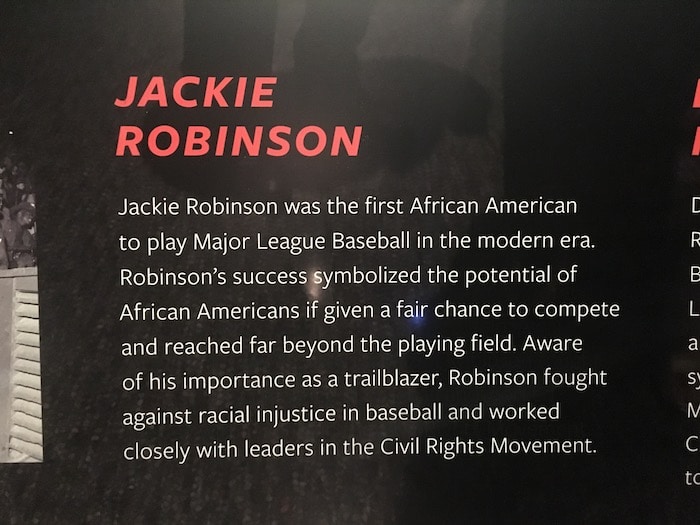
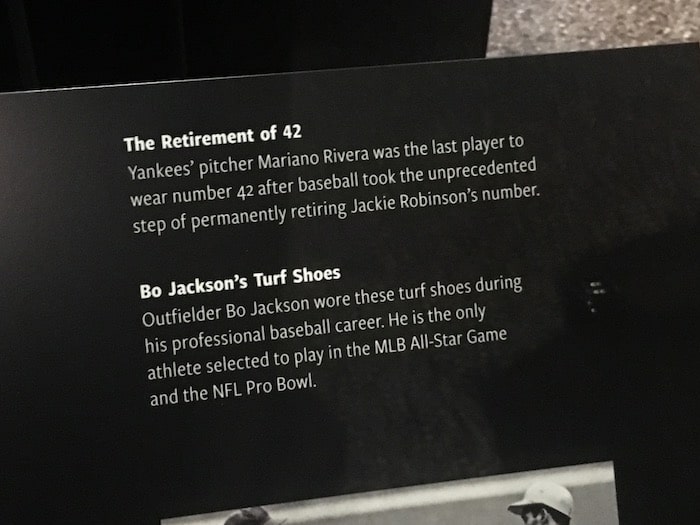
There are statues of several athletes including Venus and Serena Williams, Jesse Owens (ran in the 1936 Olympics) and Michael Jordan. One part of the exhibition is dedicated to people who changed the rules of the game to allow others to participate.

